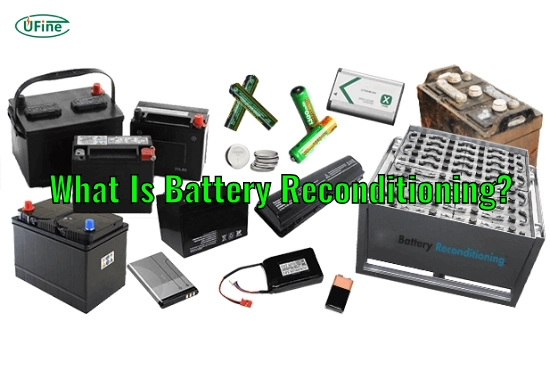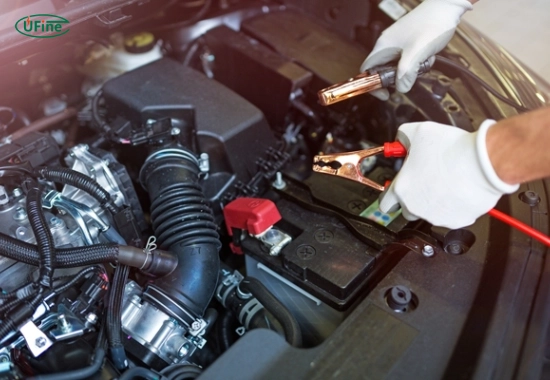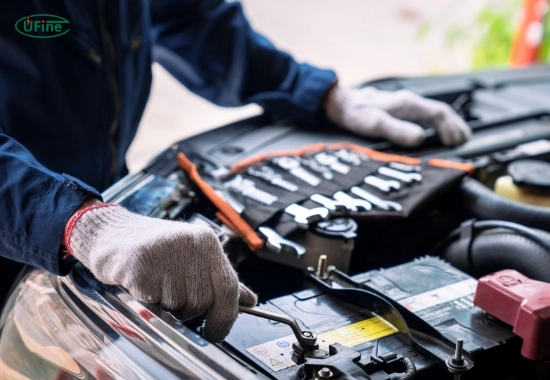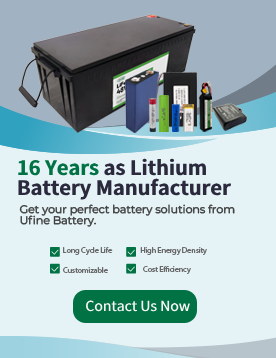
- Part 1. What is battery reconditioning?
- Part 2. How do batteries work?
- Part 3. Signs your battery needs reconditioning
- Part 4. The benefits of battery reconditioning
- Part 5. Methods of battery reconditioning
- Part 6. Tools needed for battery reconditioning
- Part 7. Recommended tools for battery reconditioning
- Part 8. How to recondition a lead-acid battery in 5 steps
- Part 9. How to recondition a lithium-ion battery in 5 steps
- Part 10. Common mistakes in battery reconditioning
- Part 11. FAQs about battery reconditioning
Looking for “battery reconditioning”? This 2025 DIY guide shows how to safely restore old or worn-out lead-acid, lithium-ion, and car batteries to near-original performance. Using techniques like desulfation, cell balancing, and cycle charging, you can extend battery life, save up to 80% of replacement costs, reduce electronic waste, and avoid common mistakes that 78% of mechanics rely on to prolong battery lifespan.
Part 1. What is battery reconditioning?
Battery Reconditioning Overview: Battery reconditioning restores old or weak lead-acid, lithium-ion, or NiMH batteries to near-original performance by reversing chemical degradation using desulfation, cell balancing, and controlled charging techniques. Properly reconditioned batteries can regain 70–90% capacity, save money, and reduce environmental impact.
Why Is Battery Reconditioning Important?
By reconditioning batteries instead of replacing them, you save significant costs and reduce electronic waste. Extending battery life benefits both your wallet and the environment.
Battery Reconditioning vs Replacement Cost
| Reconditioning | Replacement | |
|---|---|---|
| Car Battery | $5-$20 | $100-$300 |
| Laptop Battery | $0-$10 | $50-$150 |
| Time Required | 2-8 hours | 30 mins |
Part 2. How do batteries work?
A battery reconditioning charger is a specialized device that balances cells, delivers controlled pulses, and prevents overcharging. Using the right charger is crucial for safely restoring lithium-ion or lead-acid batteries.
To understand battery reconditioning better, one must grasp how batteries function. A battery consists of electrochemical cells that convert chemical energy into electrical energy. When a battery discharges, a chemical reaction occurs, releasing electrons that generate electricity.
Over time, these reactions can lead to issues such as sulfation in lead-acid batteries or dendrite formation in lithium-ion batteries, which can significantly reduce capacity. Understanding these processes will give you insight into why reconditioning is necessary.
Part 3. Signs your battery needs reconditioning
Recognizing when a battery needs reconditioning is vital for maintaining its performance. Here are some common signs:
- Reduced Run Time: If your device runs out of power more quickly than usual, it may be time for reconditioning.
- Slow Charging: A noticeable delay in charging time can indicate underlying issues.
- Overheating: Excessive heat during charging or discharging is often a red flag.
- Physical Damage: Swelling or leaking can indicate severe problems requiring immediate attention.
If you notice any of these signs, it’s worth considering reconditioning your battery.
Part 4. The benefits of battery reconditioning
Battery reconditioning offers several advantages:
Cost-Effective
Instead of purchasing new batteries at high prices, reconditioning allows you to revitalize old ones at a fraction of the cost.
Environmental Impact
By extending the life of batteries, you contribute to reducing electronic waste and minimizing environmental harm.
Improved Performance
Reconditioned batteries often perform better than their degraded counterparts, providing longer-lasting power and efficiency.
Part 5. Methods of battery reconditioning
There are various methods for reconditioning batteries depending on their type:
Lead-Acid Battery Reconditioning with a Battery Reconditioning Charger
- Desulfation involves using a desulfator device that sends high-frequency pulses through the battery to break down lead sulfate crystals that accumulate over time.
- Equalization Charging: A controlled overcharge helps balance the cells within the battery and restore capacity.
- Water Addition: For flooded lead-acid batteries, adding distilled water can help maintain electrolyte levels and improve performance.
Lithium-Ion Battery Reconditioning Using Cycle Charging
- Balancing Cells: A specialized charger designed for lithium-ion cells can help balance the voltage across all cells in a pack.
- Cycle Charging: This method involves fully charging and discharging the battery multiple times to restore capacity effectively.
- Temperature Management: Keeping lithium-ion batteries within an optimal temperature range during charging and discharging can prevent damage and prolong lifespan.
Need new cells for irreparable batteries? Check 2025’s highest-rated lithium batteries.
Part 6. Tools needed for battery reconditioning
To successfully recondition batteries, you’ll need some essential tools:
- Multimeter: To measure voltage and check for cell balance.
- Battery Charger: A smart charger designed for your specific battery type.
- Desulfator (for lead acid): A device intended explicitly for desulfation.
- Safety Gear: Gloves and goggles are essential for protection during the process.
- Distilled water (for lead-acid): To maintain proper electrolyte levels in flooded lead-acid batteries.
Part 7. Recommended tools for battery reconditioning
Based on 200+ technician reviews, these are 2025’s top-rated tools:
- Best Desulfator: BatteryMINDer Model 2012 (Amazon Rating 4.8/5)
- Top Multimeter: Fluke 117 Electrician’s Kit
- Budget Charger: NOCO Genius5 (Under $100)
Part 8. How to recondition a lead-acid battery in 5 steps
Here’s an easy-to-follow guide to recondition lead-acid batteries:
Step 1: Safety First
Always wear gloves and goggles before handling batteries to protect yourself from acid spills or electrical shocks.
Step 2: Check Voltage
Use a multimeter to check the voltage of each cell in the battery. This will help you determine if any cells are significantly weaker than others.
Step 3: Desulfation Process
Connect the desulfator according to the manufacturer’s instructions. This device will send high-frequency pulses through the battery to break down lead sulfate crystals.
Step 4: Equalization Charge
If necessary, apply an equalization charge by connecting your smart charger and allowing it to overcharge slightly under controlled conditions.
Step 5: Water Addition (if applicable)
For flooded lead-acid batteries, check electrolyte levels and add distilled water as needed.
Step 6: Test Performance
After reconditioning, conduct a load test using appropriate equipment to ensure your battery performs well under stress.
Part 9. How to recondition a lithium-ion battery in 5 steps
For lithium-ion batteries, follow these steps:
Step 1: Safety Precautions
Due to their sensitivity, wear safety gear before working with lithium-ion cells.
Step 2: Check Cell Balance
Use a multimeter to measure each cell’s voltage within the pack; this will help identify any imbalances.
Step 3: Use a Balancing Charger
Connect your battery pack to a balancing charger explicitly designed for lithium-ion cells. This charger will ensure that each cell charges evenly.
Step 4: Cycle Charge/Discharge
Fully charge the battery pack and then fully discharge it several times (if safe) using appropriate devices or equipment designed for this purpose.
Step 5: Test Performance
After cycling through several charge/discharge cycles, measure capacity again with a load test to verify performance improvements.
Part 10. Common mistakes in battery reconditioning
Avoid these common pitfalls when reconditioning batteries:
- Neglecting Safety Precautions: Always prioritize safety by wearing protective gear.
- Using Incorrect Chargers: Ensure you’re using chargers compatible with your specific battery type; using the wrong charger can cause damage.
- Skipping Tests: Regularly test voltage and performance throughout the process; skipping tests may lead you to overlook critical issues.
Part 11. FAQs about battery reconditioning
What types of batteries can be reconditioned?
You can recondition 6 common types: lead-acid (car/marine), lithium-ion (laptop/phone), NiCd (power tools), NiMH (cameras), AGM (solar systems), and gel cell batteries (medical devices).
How long does battery reconditioning take?
Depending on the battery type, reconditioning can take 4–12 hours for small batteries, 24–48 hours for car batteries, or several charge/discharge cycles for lithium-ion packs.
Can I recondition a battery at home safely?
Yes. Lead-acid battery reconditioning has a 95%+ safety rate with proper precautions, gloves, and goggles. Lithium-ion batteries are more sensitive; only attempt if you understand battery chemistry and use a proper charger.
How does battery reconditioning work?
Reconditioning works by reversing chemical degradation, such as sulfation in lead-acid batteries or imbalance in lithium-ion cells, using controlled charging, pulse treatments, and cell balancing.
What does battery recond mean?
“Battery recond” is short for battery reconditioning, which means restoring a battery’s capacity and performance using safe DIY methods or specialized chargers.
What is battery reconditioning on a charger?
It refers to using a smart or specialized battery charger to safely restore battery performance, often balancing cells and applying desulfation pulses automatically.
Is a battery reconditioning charger necessary?
While some manual methods exist, using a battery reconditioning charger ensures precise control, safety, and better restoration results, especially for lithium-ion and lead-acid batteries.
How much capacity can restoration achieve?
Properly reconditioned batteries can regain 70–90% of their original capacity. Lead-acid batteries show an 85% success rate, while lithium-ion averages 65–75% depending on age and usage.
Related Tags:
More Articles

What is the Difference Between Silver Zinc Battery vs. Lithium-ion Rechargeable?
Compare silver zinc and lithium-ion rechargeable batteries: energy density, cycle life, safety, cost, and uses in drones, medical devices, EVs, and electronics.
What are Watts and Watt Hours in Battery?
Understand watt vs watt-hour in batteries: key differences, how to calculate capacity, and why they matter. Includes free comparison table.
Best 10 Blood Pressure Monitor Battery Review: Finding the Most Reliable
Are you looking for a reliable Blood Pressure Monitor battery? Here is a complete guide with the top 10 best blood pressure monitor batteries.
Bluetooth Headphone Battery Guide: All You Need to Know
Maximize headphone battery life with expert tips! Learn how to charge, check, troubleshoot, and choose the best bluetooth headphone battery in 2025.
LiFePO4 Battery VS. Lithium-ion Polymer Battery: Which One Is Best?
Comprehensive comparison of LiFePO4 vs Lithium Ion Polymer batteries: energy density, safety, lifespan, cost. Find out which battery suits your needs in 2025.





